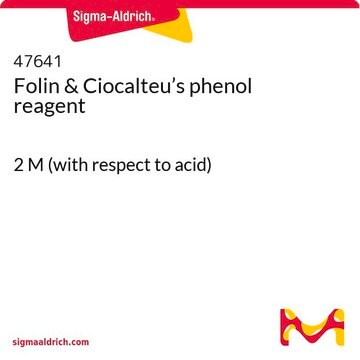27645
Gallic acid monohydrate
≥99% (HPLC)
Sinónimos:
3,4,5-Trihydroxybenzoic acid monohydrate
About This Item
Productos recomendados
Nivel de calidad
Análisis
≥99% (HPLC)
formulario
solid
impurezas
7-12% water (Karl Fischer)
residuo de ign.
≤0.1% (as SO4)
mp
252 °C (dec.) (lit.)
trazas de anión
chloride (Cl-): ≤200 mg/kg
sulfate (SO42-): ≤100 mg/kg
cadena SMILES
OC(=O)c1cc(O)c(O)c(O)c1
InChI
1S/C7H6O5/c8-4-1-3(7(11)12)2-5(9)6(4)10/h1-2,8-10H,(H,11,12)/p-1
Clave InChI
LNTHITQWFMADLM-UHFFFAOYSA-M
¿Está buscando productos similares? Visita Guía de comparación de productos
Categorías relacionadas
Descripción general
Aplicación
Código de clase de almacenamiento
11 - Combustible Solids
Clase de riesgo para el agua (WGK)
WGK 2
Punto de inflamabilidad (°F)
482.0 °F - closed cup
Punto de inflamabilidad (°C)
250 °C - closed cup
Equipo de protección personal
dust mask type N95 (US), Eyeshields, Gloves
Choose from one of the most recent versions:
¿Ya tiene este producto?
Encuentre la documentación para los productos que ha comprado recientemente en la Biblioteca de documentos.
Los clientes también vieron
Nuestro equipo de científicos tiene experiencia en todas las áreas de investigación: Ciencias de la vida, Ciencia de los materiales, Síntesis química, Cromatografía, Analítica y muchas otras.
Póngase en contacto con el Servicio técnico







